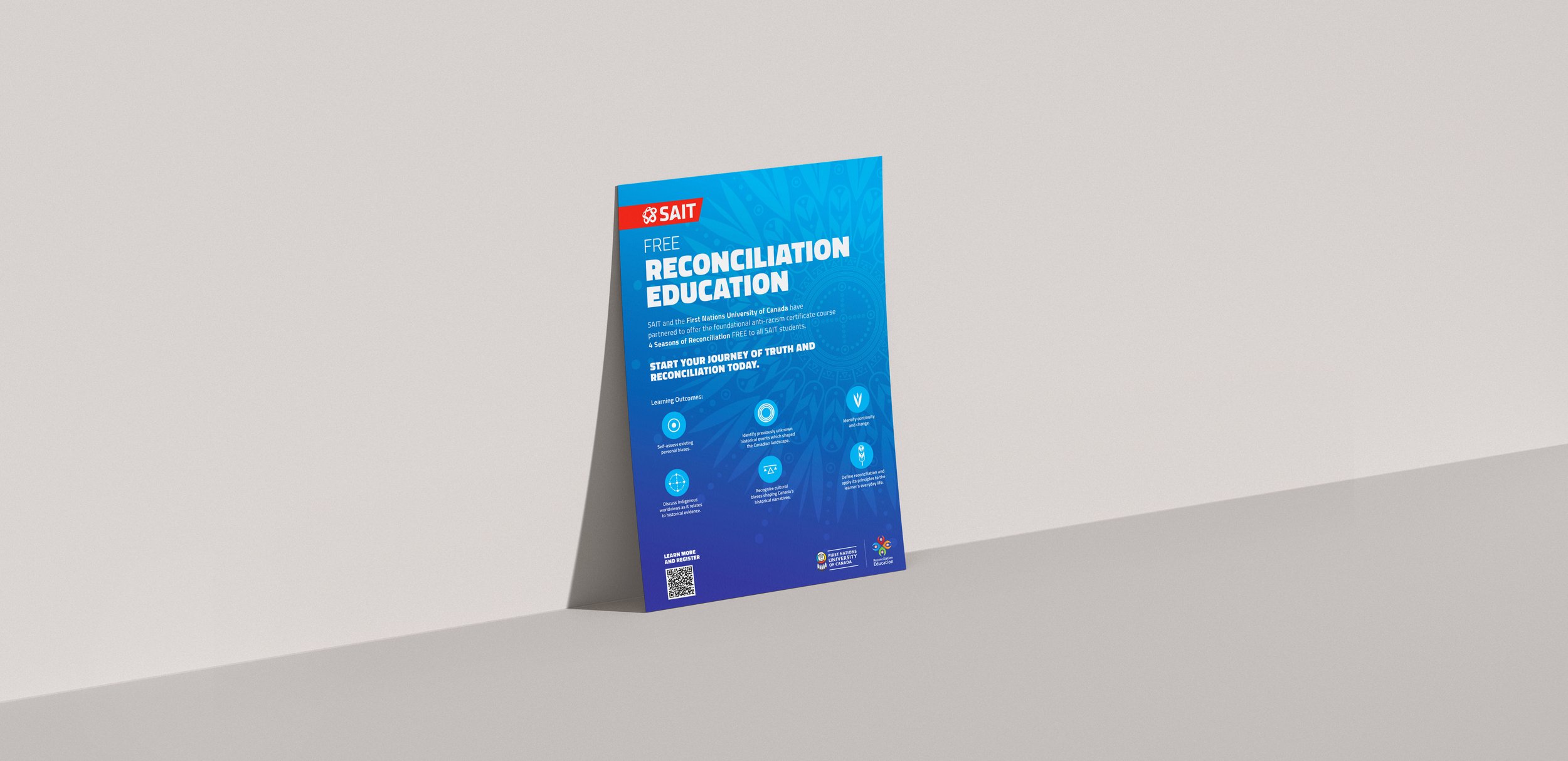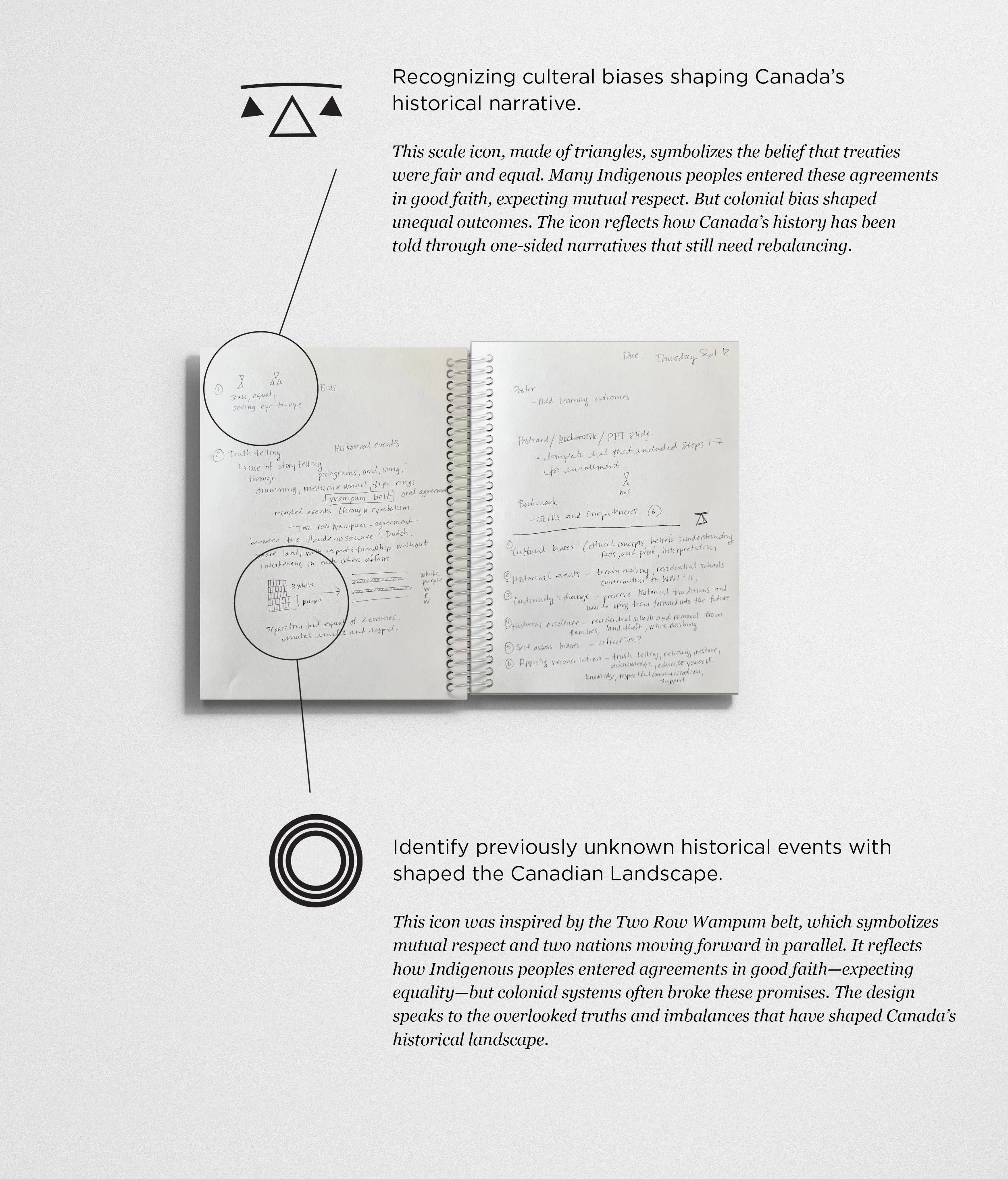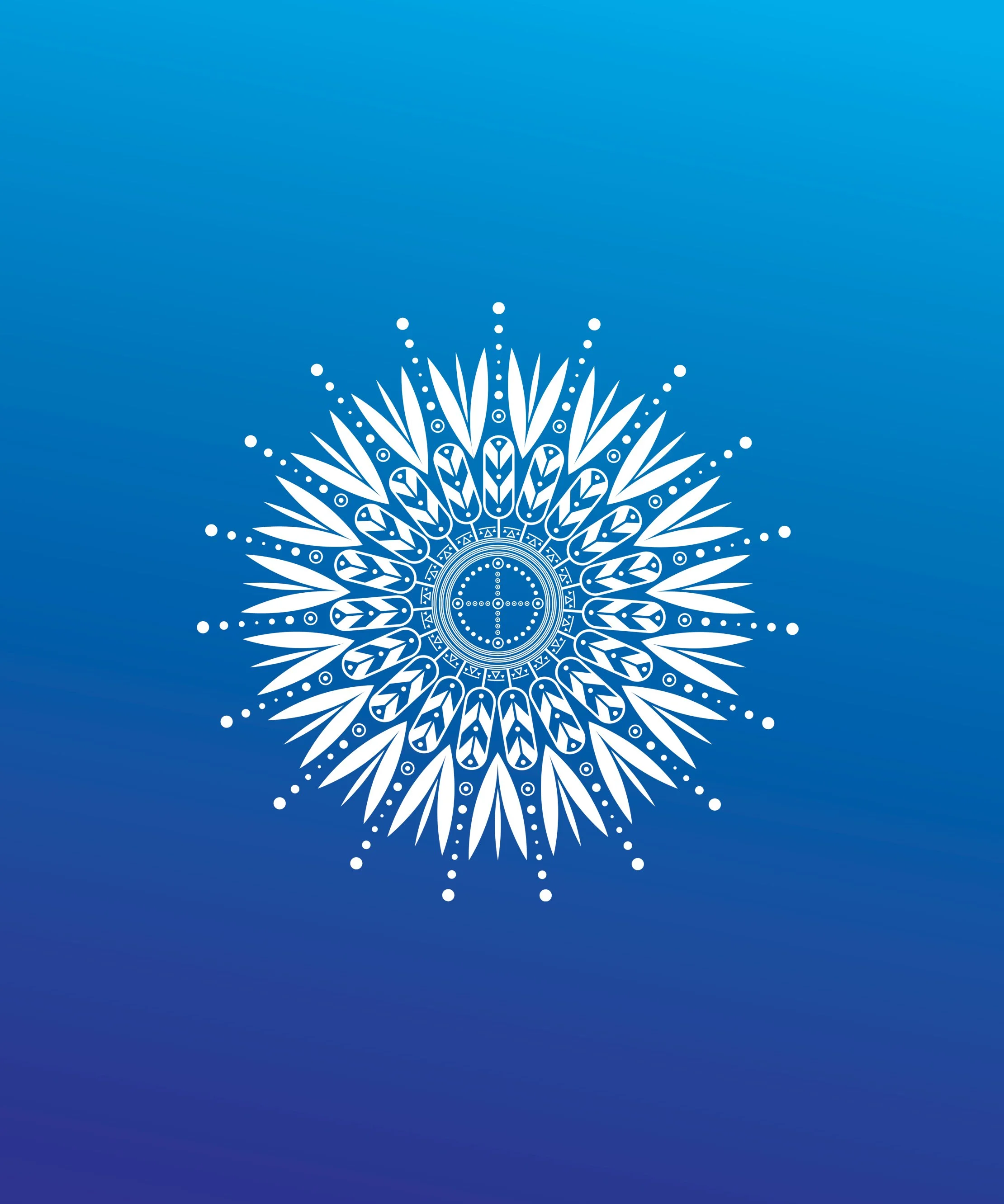4 Seasons of Reconciliation Awareness Campaign
To promote SAIT’s 4 Seasons of Reconciliation course—offered in partnership with First Nations University of Canada—I was tasked with creating an awareness campaign to engage students and staff across campus. The course responds to the Truth and Reconciliation Commission’s Calls to Action, offering transformative education in a free, three-hour format.
Client: SAIT – Natoysopoyiis Centre for Indigenous Engagement
Role: Lead Designer
Deliverables: Poster, pull-up banner, postcard, bookmark, social graphics, internal newsletter graphic
Year: 2024






